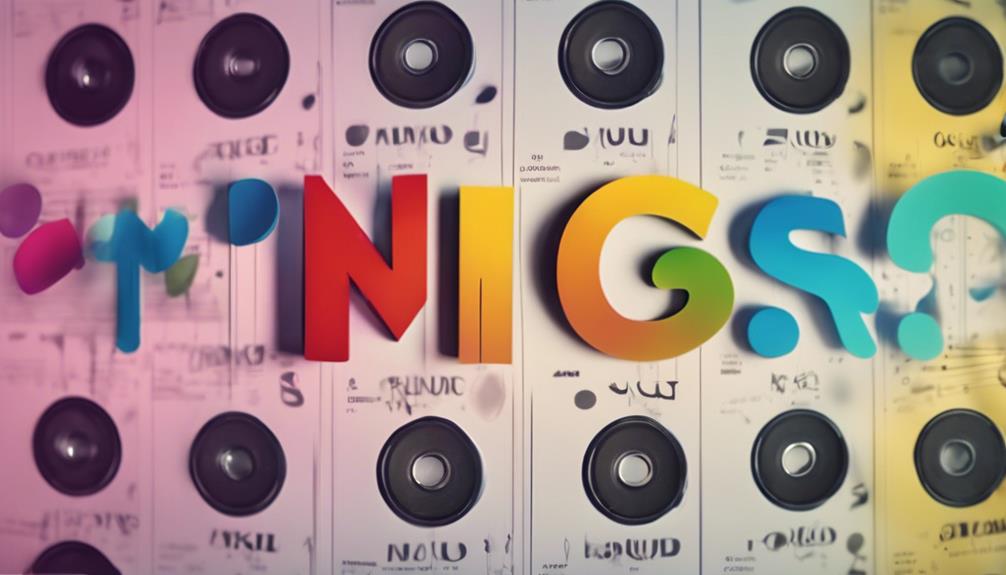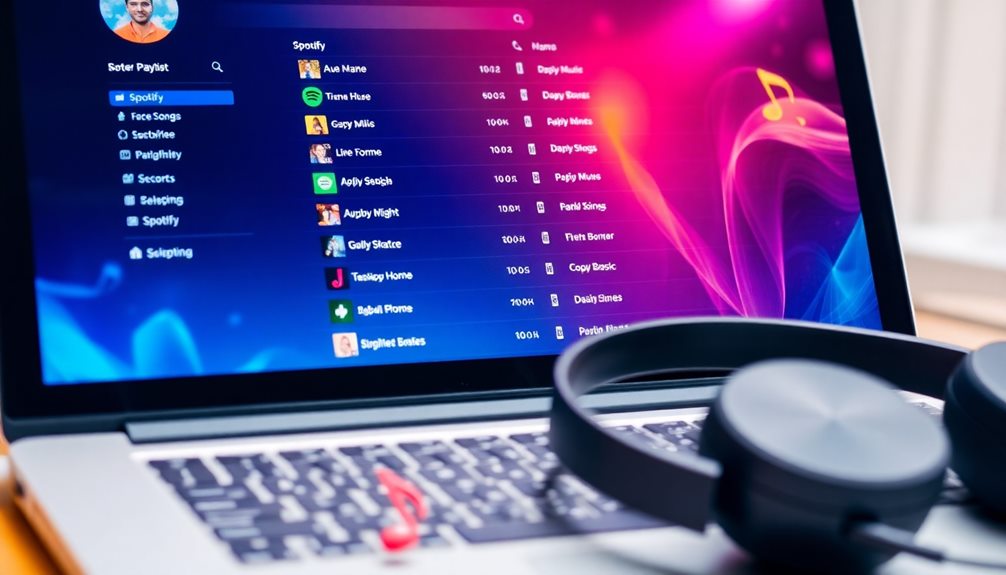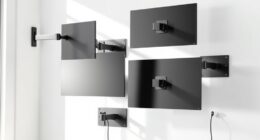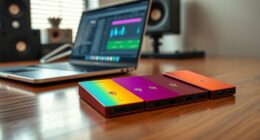A cardioid microphone is a fantastic tool that captures sound mostly from the front, which makes it great for live shows and recordings. Its heart-shaped polar pattern helps to reduce noise from the sides and back, ensuring your voice or instrument shines through clearly. These mics are often used in podcasting, singing, and even outdoor recordings! They're super sensitive and handle loud sounds well too. If you want to know what to look for when picking a cardioid mic or learn about different types, there's so much more exciting info ahead!
Key Takeaways
- Cardioid microphones have a heart-shaped polar pattern, capturing sound mainly from the front while minimizing background noise.
- They are ideal for live performances and studio recordings due to their feedback rejection and sound isolation capabilities.
- Typically condenser mics, they require phantom power and are known for their high sensitivity and audio clarity.
- Cardioid mics are versatile, effective for vocals, instruments, podcasting, and outdoor field recordings.
- Key features include proximity effect, SPL ratings, and options with built-in pop filters for enhanced sound quality.
Definition of Cardioid Microphones
A cardioid microphone, often referred to as a vocal mic, is designed with a heart-shaped polar pattern that captures sound primarily from the front. This means when you sing or speak directly into it, the mic hears you clearly, while muffling sounds from the sides and back. Isn't that cool?
These microphones are perfect for live sound and recording applications. They work wonders in isolating your voice or instrument from any ambient noise around. This helps create a cleaner and clearer sound, making your recordings shine!
Cardioid mics are typically condenser types, which means they're very sensitive and great for picking up details in sound. Most of them require phantom power to work, usually supplied by audio interfaces or mixers.
When you set everything up right, you'll notice how much clarity they bring to your audio.
Whether you're performing on stage or recording in a studio, using a cardioid microphone can really enhance your experience. You'll love how it captures your voice so beautifully while keeping distractions at bay.
Key Features and Characteristics
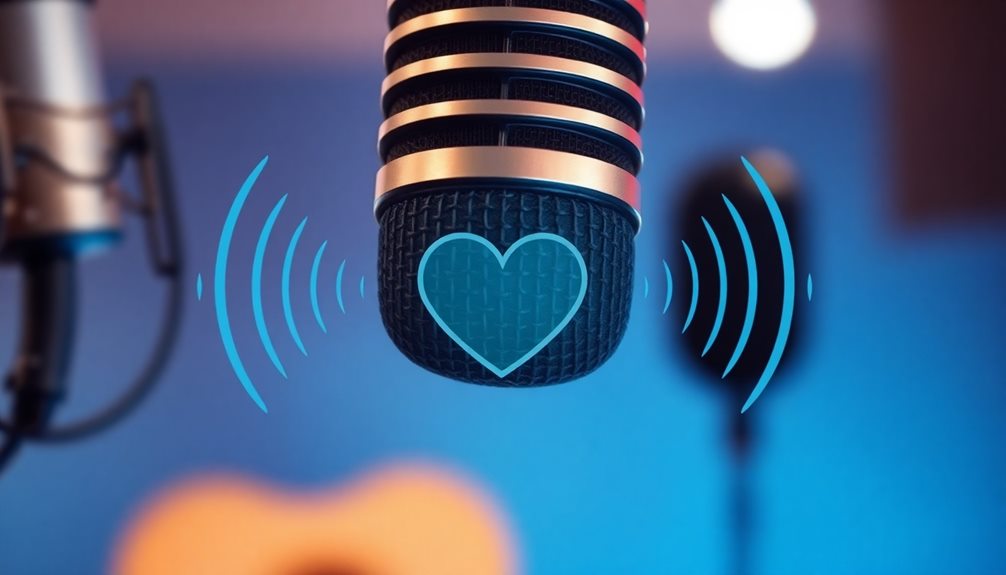
Cardioid microphones come with several key features that enhance their performance in various settings. One standout trait is their heart-shaped polar pattern. This design lets them capture sound primarily from the front while minimizing background noise from the sides and rear. This makes them perfect for vocal performances, as they focus on what you want to hear.
Another great feature is their high sensitivity. Cardioid microphones pick up detailed sounds, which is especially helpful in controlled environments, like studios. Many of these mics have a 180° null point, allowing you to position them easily to avoid feedback and unwanted sounds.
You'll also notice the proximity effect, where low frequencies get a boost when you're close to the mic. This adds warmth to your voice, making it sound richer. While dynamic microphones usually don't need phantom power, some cardioid mics, especially condenser types, do require it.
These microphones handle high sound pressure levels well, making them versatile tools for various situations. With all these features, cardioid microphones truly shine in capturing the best sound possible!
Applications and Uses
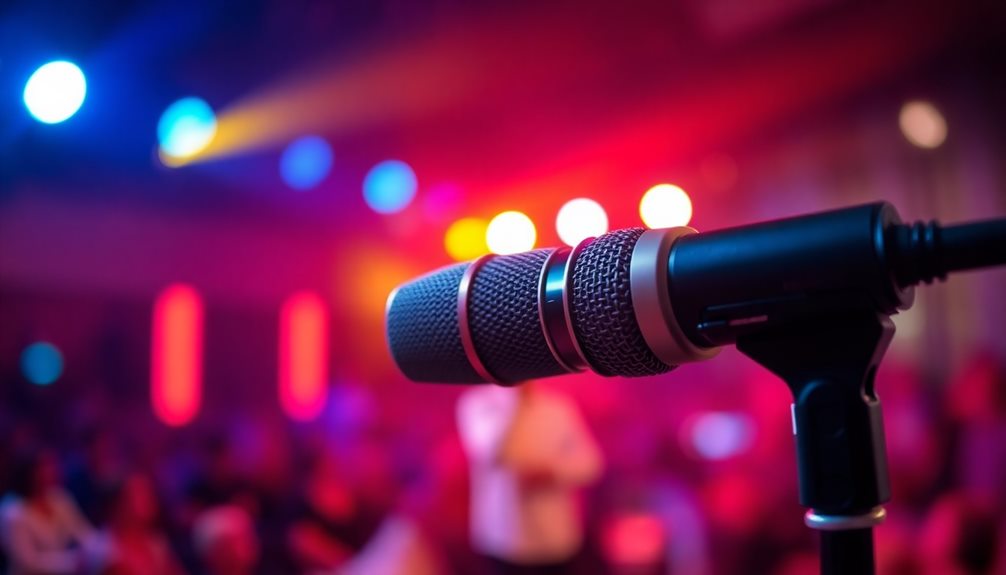
When it comes to versatile audio applications, cardioid microphones excel in a variety of settings. These microphones shine in vocal recording, capturing sound mostly from the front. This design helps minimize background noise and echoes, giving you clear audio that stands out.
If you're performing live, cardioid microphones are perfect for reducing feedback. They focus on your voice while blocking out sounds from the audience and environment.
You'll also find cardioid mics widely used in podcasting and streaming. They can really isolate speakers' voices, making your content clearer and reducing ambient sound interference.
In studio settings, they're a top choice for recording individual instruments. Cardioid microphones help minimize sound bleed from other instruments, allowing each sound to shine.
If you're into field recording, these mics are great for outdoor use too. They capture specific sounds while reducing unwanted background noise, making your recordings more professional.
Whether you're singing, speaking, or recording sounds in nature, cardioid microphones are your trusty companions, ensuring you get the best quality audio possible!
Comparison With Other Microphone Types

Choosing the right microphone type can greatly impact your recording and performance quality.
Cardioid microphones are fantastic for isolating sound. They pick up sound from the front while rejecting noise from the sides and back. This makes them much better than omnidirectional microphones, which capture sound equally from all directions.
In live performances, cardioid mics shine because they offer excellent feedback rejection. Supercardioid microphones take it a step further by having a narrower pickup pattern. This means they're great for loud places but can miss some sounds from the sides.
When it comes to dynamic microphones, they work well in high sound pressure settings, making them durable for live shows.
However, cardioid condenser microphones are your go-to for studio recordings and vocal applications because they capture finer details.
Lastly, ribbon microphones are known for their smooth sound, but they mightn't be as versatile as cardioid microphones.
Cardioid mics are durable and effective for various recording situations, making them a fantastic choice for both beginners and pros.
Selecting the Right Cardioid Microphone
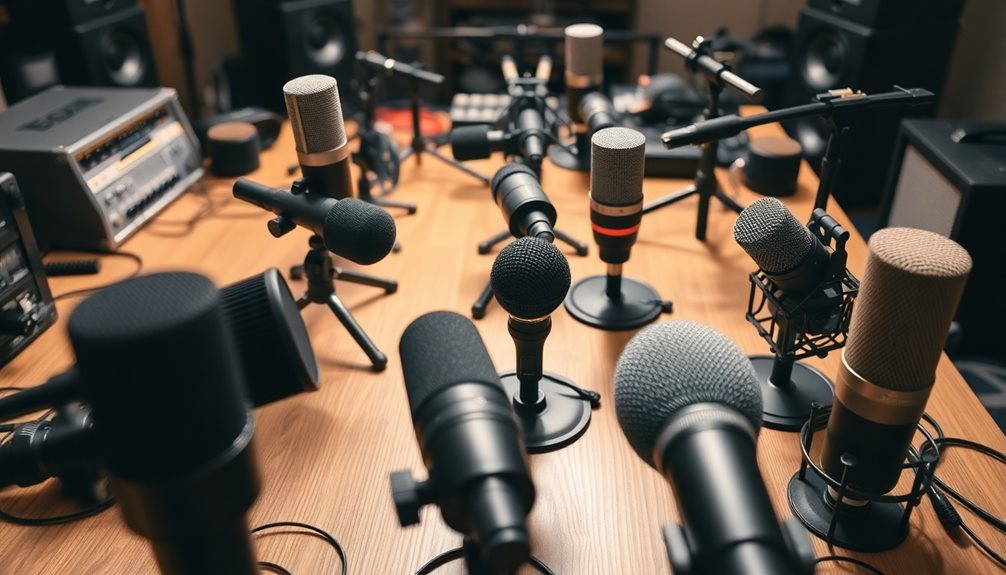
Your microphone selection can greatly influence the quality of your recordings, especially when it comes to cardioid models. When you're choosing a cardioid microphone, keep a few key factors in mind.
| Feature | Importance | Recommendations |
|---|---|---|
| Diaphragm Size | Captures nuanced sound | Larger sizes for vocals and instruments |
| Frequency Response Range | Enhances sound detail | Look for a broader range |
| Sound Pressure Level (SPL) | Avoids distortion | Choose mics with high SPL ratings |
A larger diaphragm captures more detail, making it perfect for vocal recordings and acoustic instruments. The frequency response range is essential, too; a broader range improves versatility and detail in your recordings. You'll also want to pay attention to the sound pressure level (SPL) to prevent distortion from loud sounds.
Don't forget features like built-in pop filters and shock mounts—they help minimize plosive sounds and handling noise. Finally, consider your budget. Options like the Maono A04 and Audio-Technica AT2020 offer quality performance for under $100, making them great choices for home studios. Happy recording!
Frequently Asked Questions
What Is a Cardioid Microphone Used For?
You'll find cardioid microphones perfect for vocal recording, instrument isolation, podcasting, and live sound environments. They help capture clear audio while reducing background noise, ensuring your recordings sound professional and focused.
What Are the Disadvantages of Cardioid Microphones?
Imagine a concert where your favorite singer's voice gets drowned out by the crowd. That's a cardioid mic's downside—it can miss important sounds from the sides, leading to unbalanced recordings and less ambient capture.
What Does a Cardioid Do?
A cardioid microphone captures sound mainly from the front, which helps you isolate vocals or instruments. It greatly reduces background noise, making it perfect for live performances and studio recordings where clarity's essential.
How to Speak Into a Cardioid Microphone?
Imagine a spotlight shining on you. Position the microphone 6-12 inches away, speak directly into the front, and use a pop filter. Keep your distance consistent for balanced audio, ensuring your voice shines through clearly.
Conclusion
To sum up, cardioid microphones are pretty amazing tools for capturing sound! They pick up noise mainly from the front, making them perfect for recording vocals or instruments. Whether you're singing, podcasting, or even doing a YouTube video, a cardioid mic can help you sound your best. So, when you're choosing one, think about what you need. With the right cardioid microphone, you'll be ready to share your voice with the world in style!




